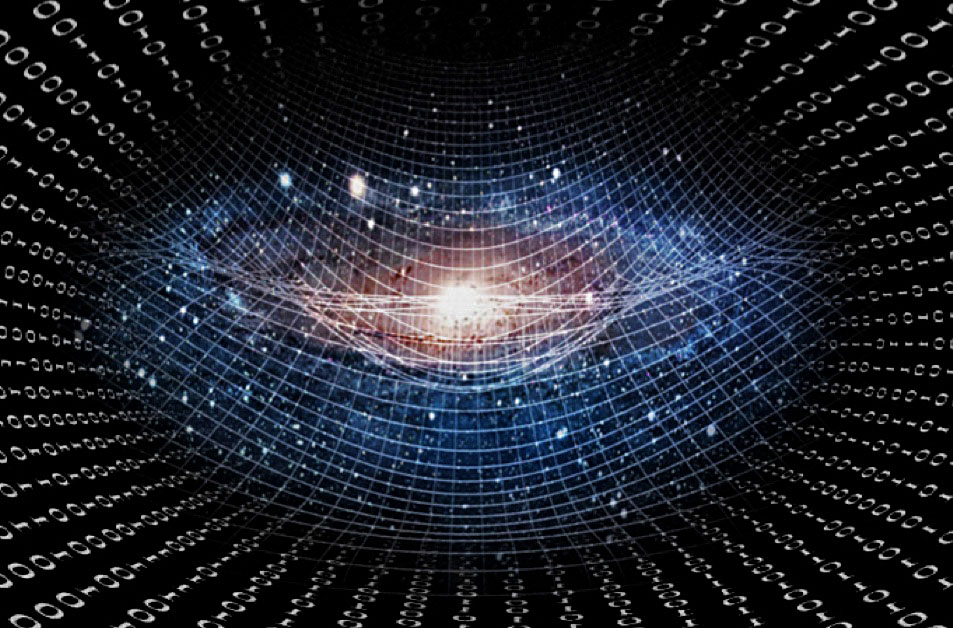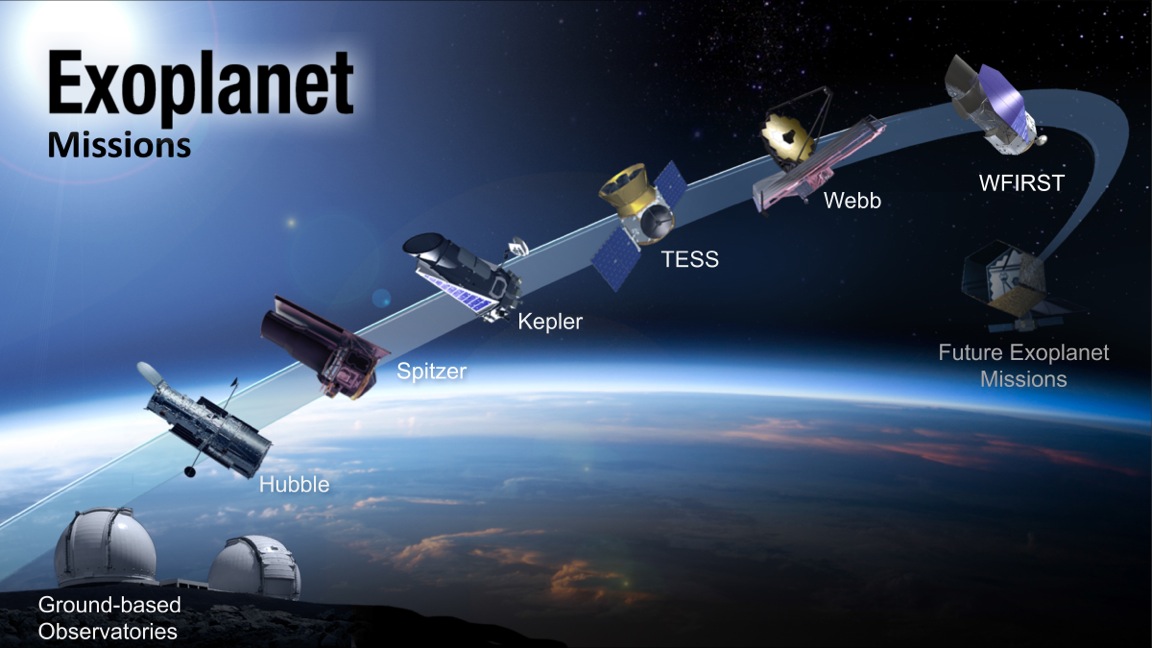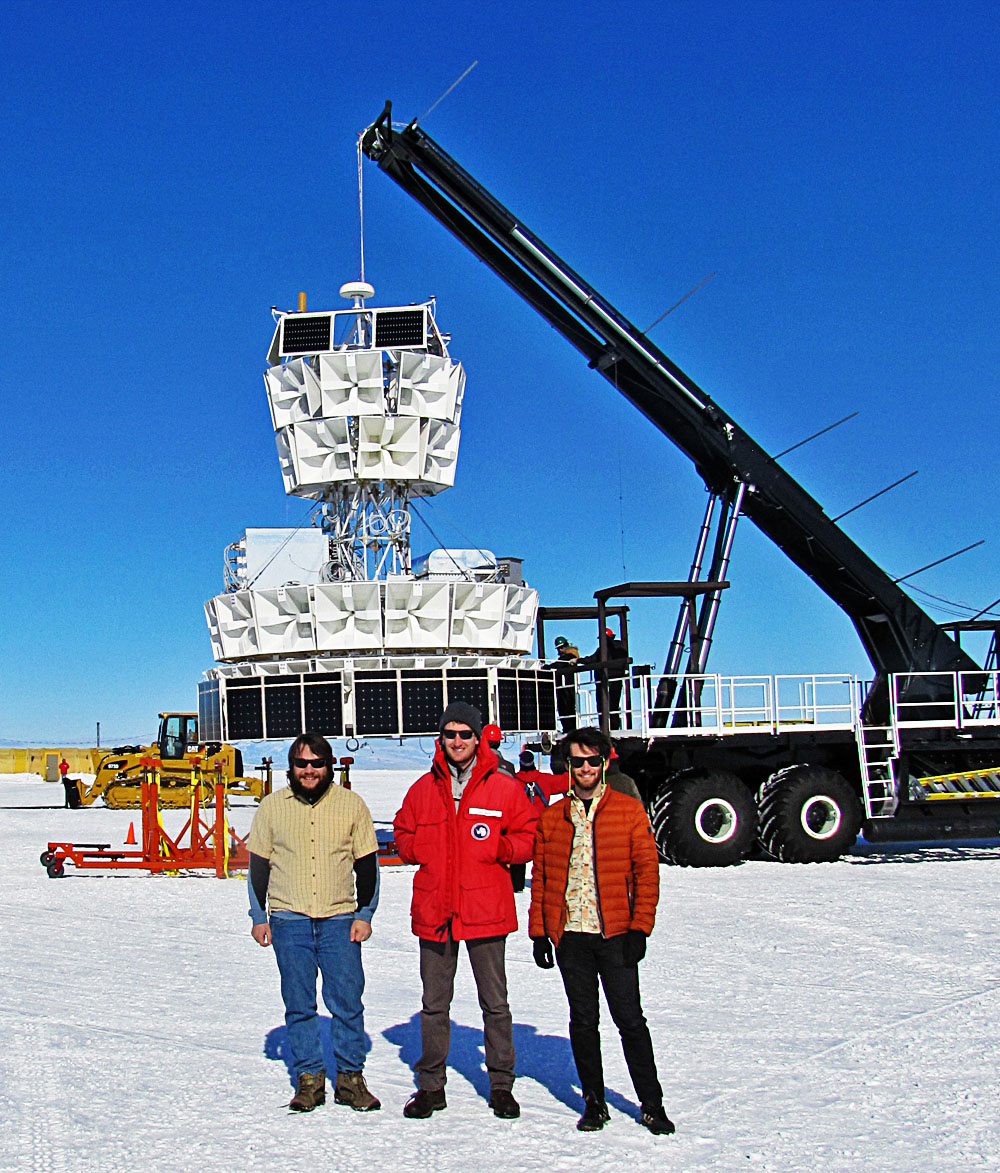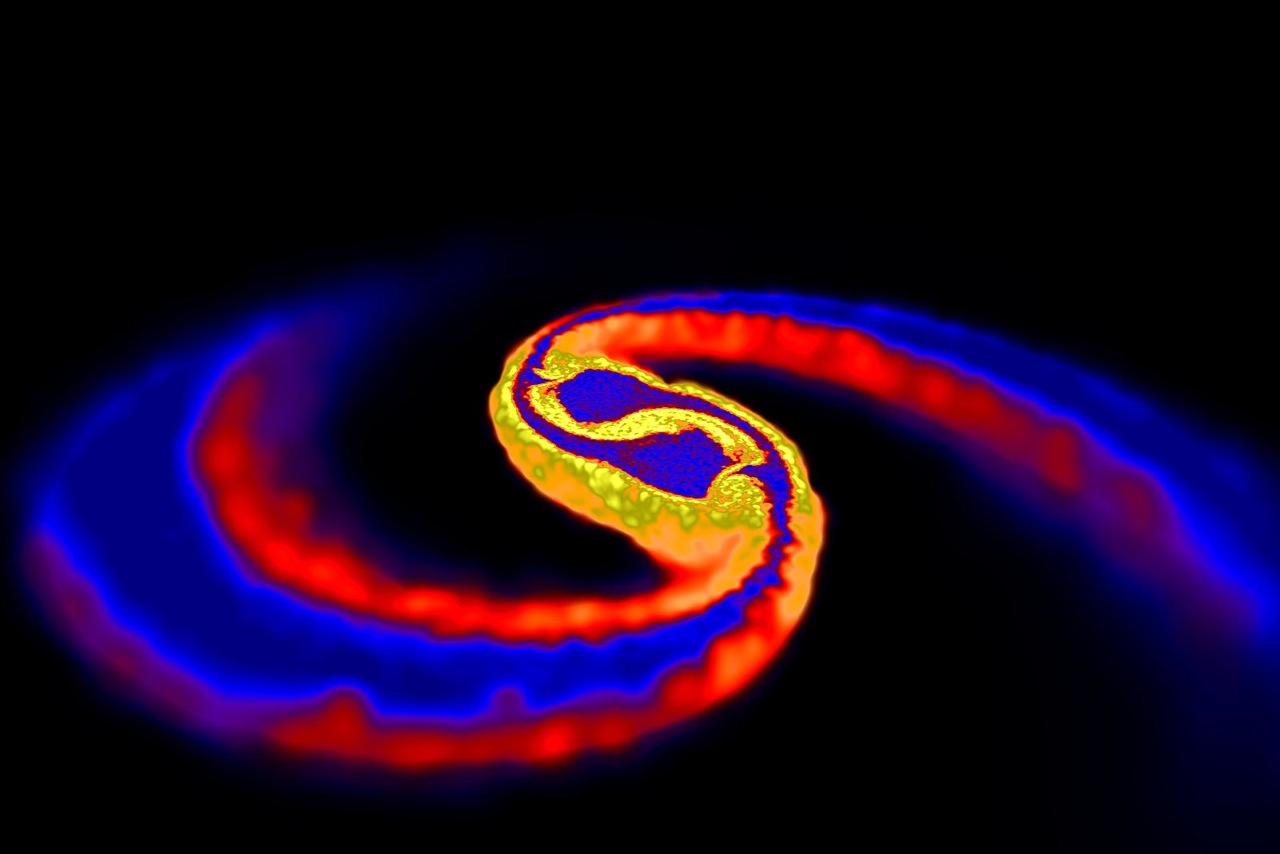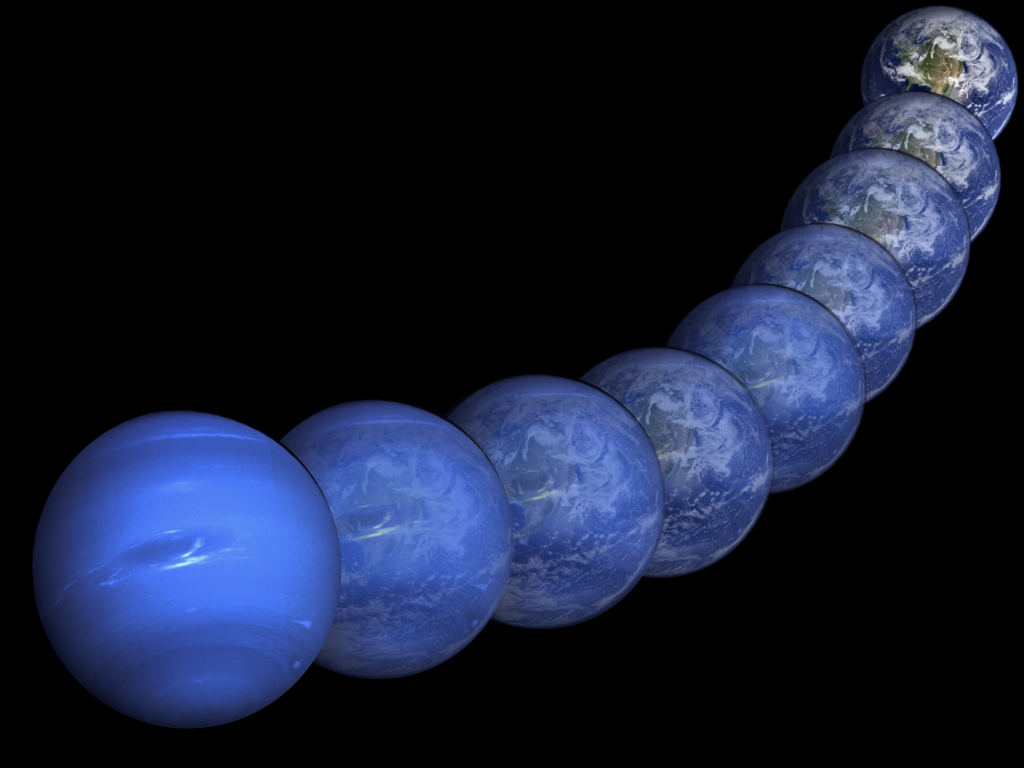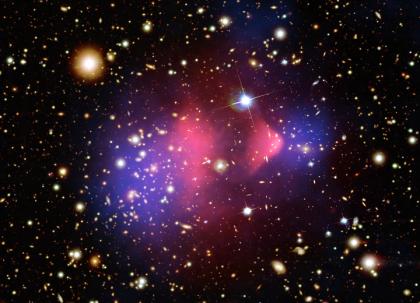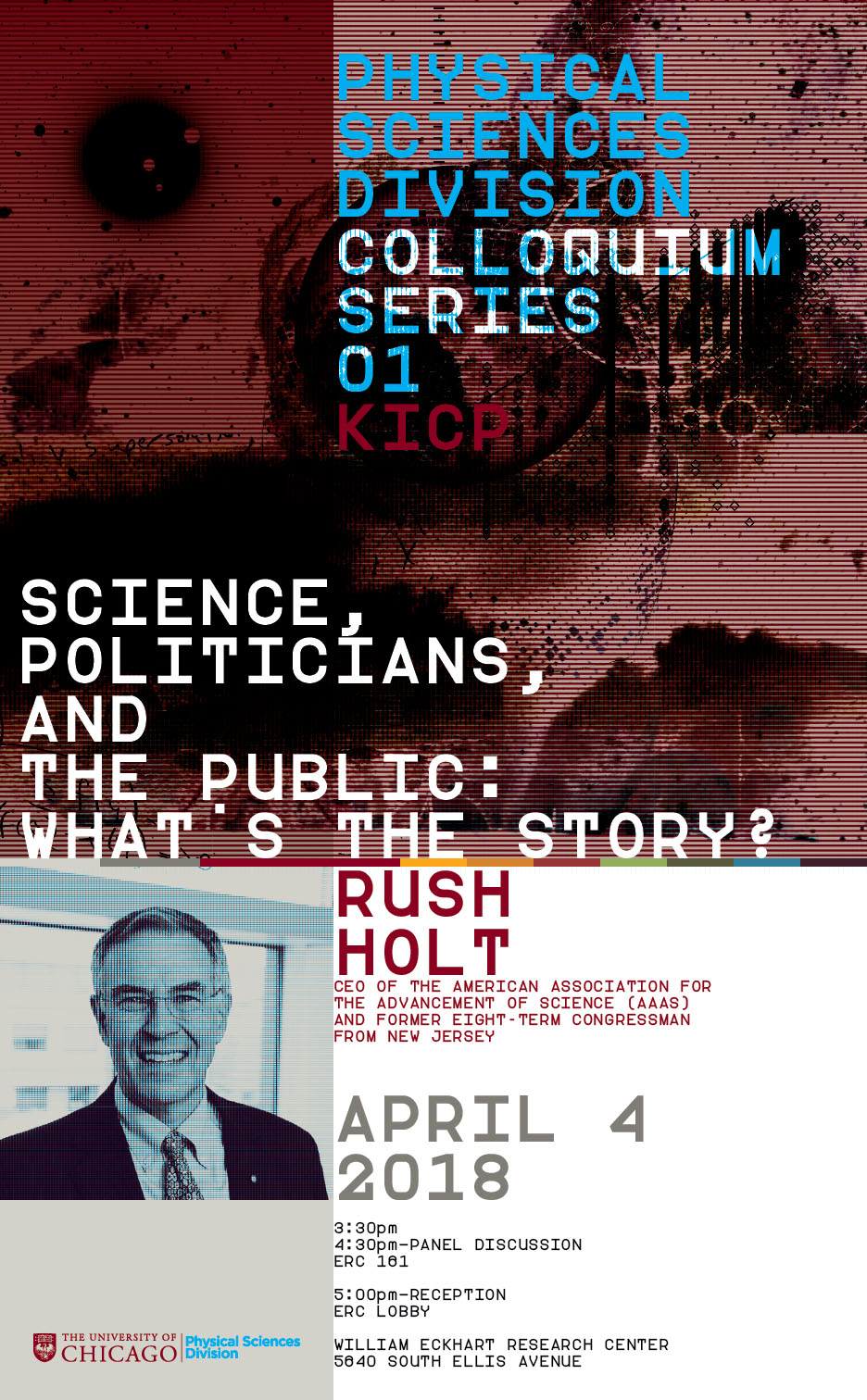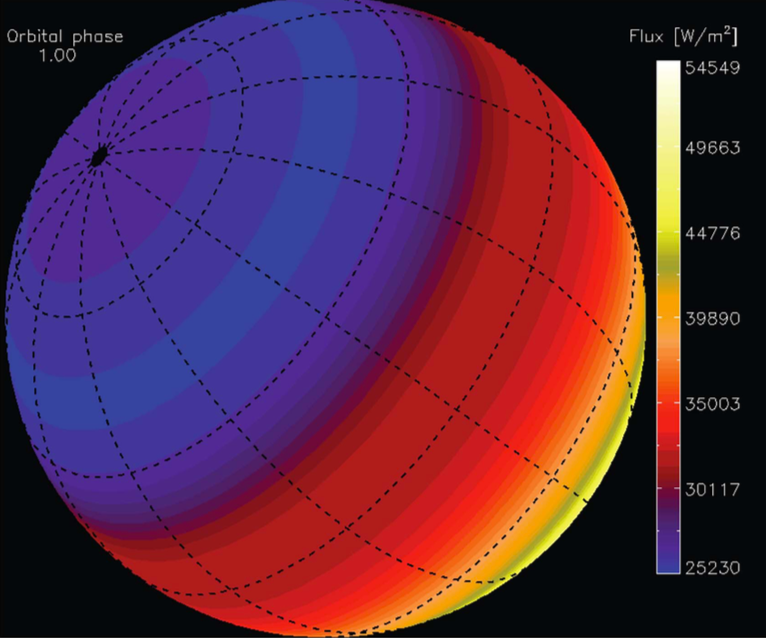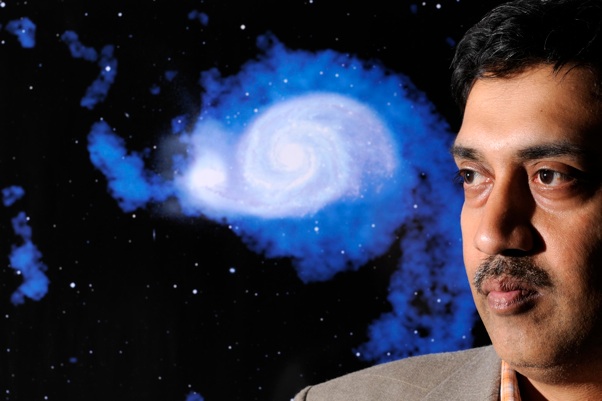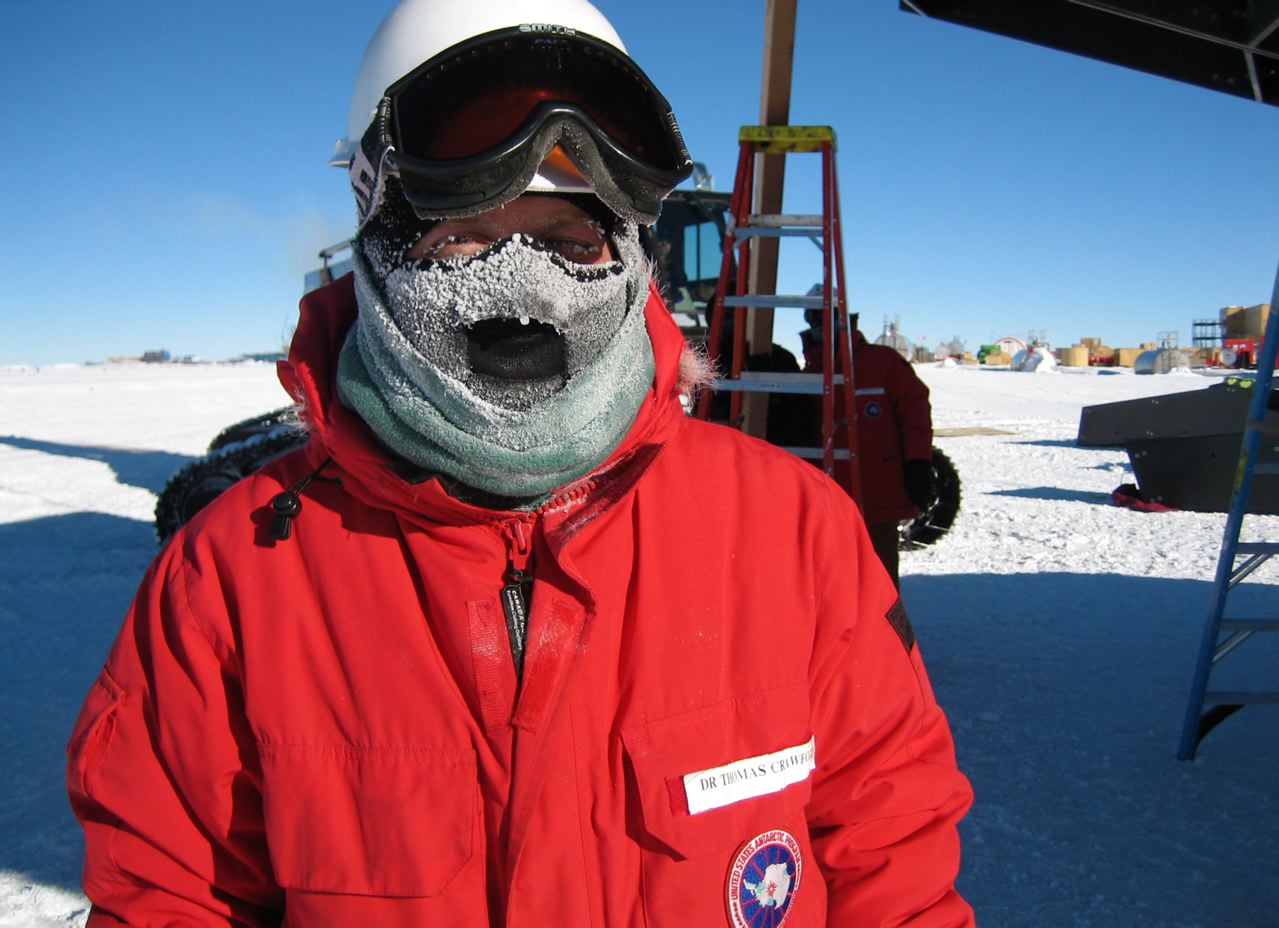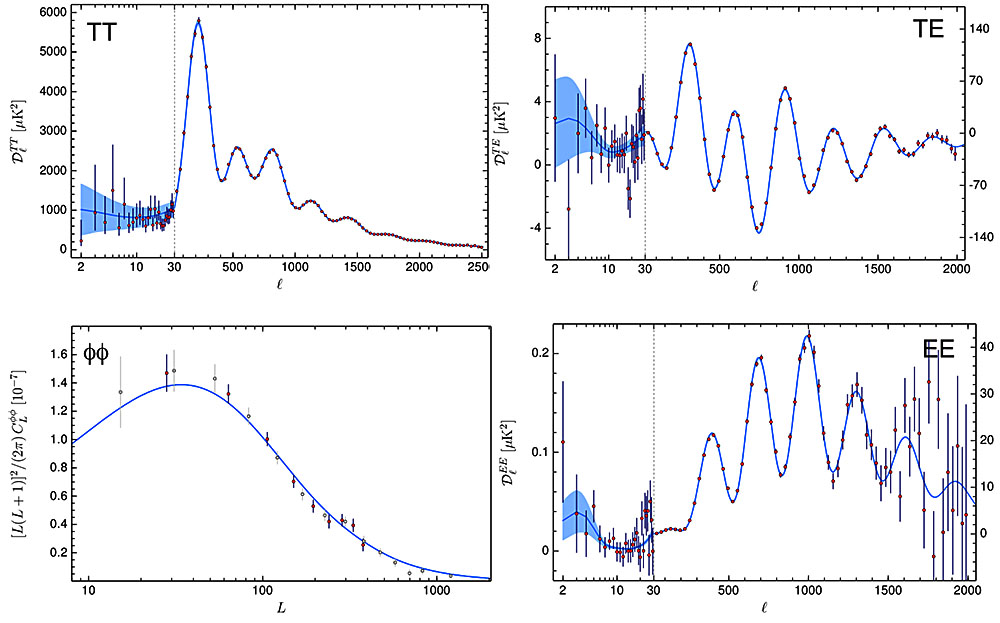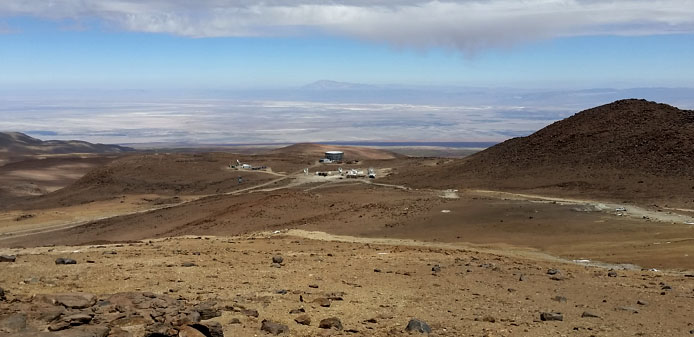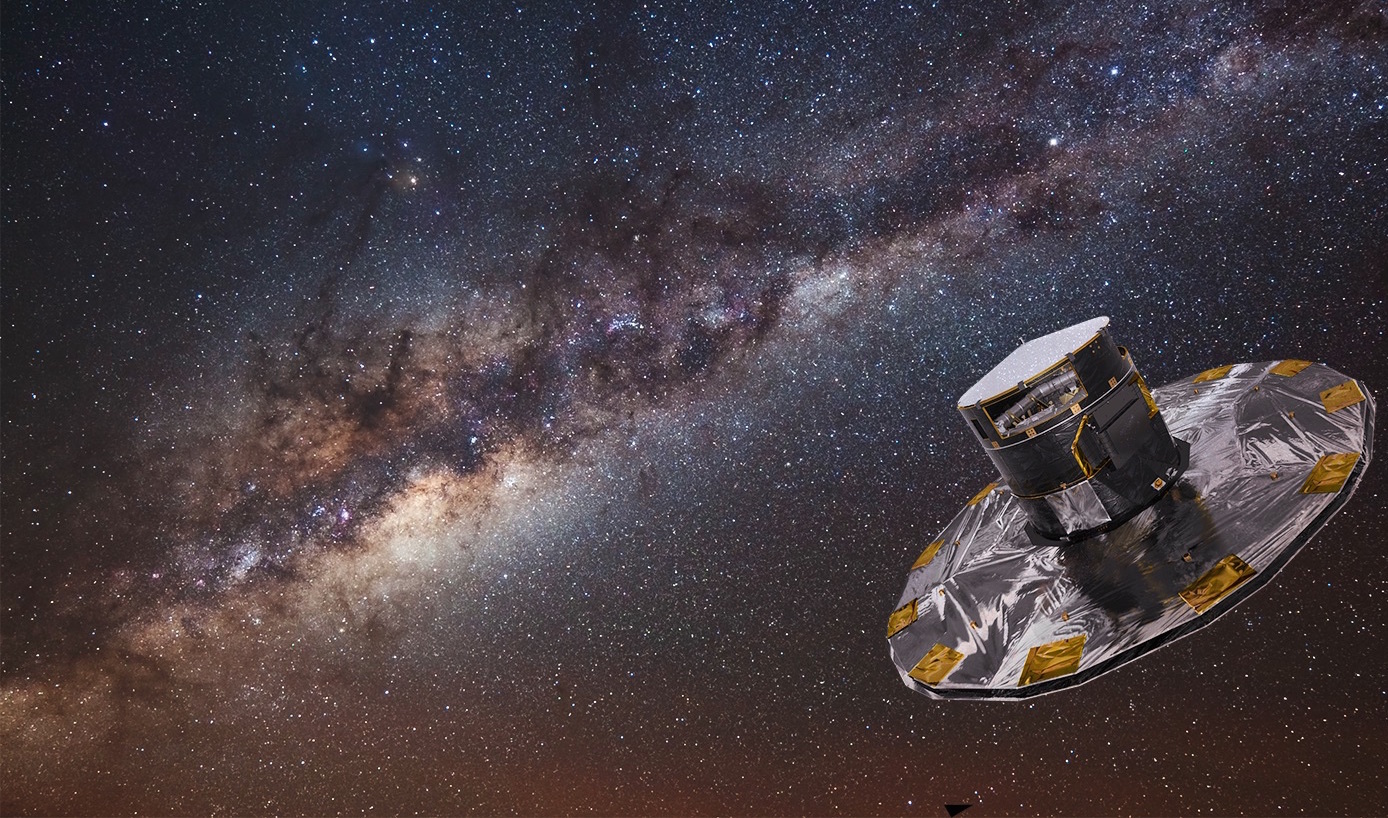 |
 |
 |
 |
 |
 |
 |
 |
 |
 |
 |
 |
|
Talks & Events
|
Colloquia: 2018
From Emergent Gravity to Dark Energy and Dark Matter Video The observed deviations from the laws of gravity of Newton and Einstein in galaxies and clusters can logically speaking be either due to unseen dark matter or due to a change in the way gravity works. Until recently there was little reason to doubt that general relativity correctly describes gravity in these circumstances. In the past few years insights from black hole physics and string theory have lead to a new theoretical framework in which the gravitational laws are derived an underlying microscopic quantum description of spacetime. An essential ingredient in the derivation of the Einstein equations is that the quantum entanglement of the vacuum obeys an area law, a condition that is known to hold in Anti-de Sitter space. In a Universe that is dominated by positive dark energy, like de Sitter space, the microscopic entanglement entropy contains, in addition to the area law, a volume law contribution whose total contribution equals the Bekenstein-Hawking entropy associated with the cosmological horizon. We will argue that this extra volume law contribution leads to modifications in the emergent laws of gravity, and provide evidence for the fact that these modifications explain the observed phenomena in galaxies and clusters currently attributed to dark matter. We end with a discussion of the possible implications for early cosmology, the CMB and structure formation. WFIRST: Where Things Stand with the First Exoplanet Direct Imaging Flight Mission The WFIRST mission will be the first demonstration of exoplanet coronagraphy in space, and is intended to demonstrate several key technologies that are on the critical path to larger missions that will eventually find and spectrally characterize planets that could be habitable to life as we know it. WFIRST entered Phase A in January of 2016, and is expected to enter Phase B in April of this year. This talk will describe the entertaining story of how this mission came to be, where things currently stand in terms of predicted imaging performance, the potential for a starshade rendezvous mission, and what to expect for guest observer opportunities. I'll also describe how the two coronagraph science teams are working to maximize the scientific output of what is categorized as a "technology demonstration" instrument. Finally, I'll offer some of my personal take-aways from the experience of watching such a large and challenging mission come together. Citizen Science Frontiers: Efficiency, Engagement, and Serendipitous Discovery with Human-Machine Systems Video The Zooniverse is the world's largest and most successful scientific crowdsourcing platform, engaging more than 1.6 million volunteers in tasks including classifying galaxies, discovering planets, transcribing artist's notebooks, and tracking resistance to antibiotics. Processing our increasingly large datasets poses a bottleneck for producing real scientific outcomes. Citizen science - engaging the public in research - provides a solution, particularly when coupled with machine learning algorithms and sophisticated task allocation. Faced with a rapidly growing demand for citizen science projects, Zooniverse launched its 'Project Builder' which allows you, the researcher, to build your own project in-house for free using the Zooniverse infrastructure and tools. In this talk I will discuss the frontiers of citizen science, including Zooniverse innovations in human-machine integration coupled with community engagement -- and the related open questions. I will also provide a brief tutorial on building your own crowdsourcing project. The Basis for Cosmic Ray Feedback There is strong observational and theoretical evidence that star formation in galaxies is inherently self limiting, and that the interaction of galaxies with their environments plays a significant role in galactic evolution. Cosmic rays - the relativistic particles that pervade our galaxy and account for about 1/3 of the energy density in the interstellar medium - have emerged as a likely agent of these forms of feedback. The basis of cosmic ray feedback is scattering of cosmic rays by plasma waves, a microscale process that ultimately transfers energy and momentum between cosmic rays and thermal gas. The image, from Ruszkowski, Yang, & Zweibel 2017, shows a simulation of an outflow driven from a galaxy by this process. Gauge-field inflation and the origin of the matter-antimatter asymmetry CANCELLED The basic inflationary paradigm is in good shape. On the one hand, the observed density fluctuations are adiabatic, gaussian and are red-tilted---characteristics in general agreement with simple models built from scalar fields. On the other hand, B-mode polarization of the cosmic microwave background sourced by primordial gravitational waves, the so-called smoking-gun signature of inflation, remains elusive. Upcoming and planned experiments will make increasingly precise B-mode measurements, potentially putting the inflationary paradigm through a stringent test. In this talk, I describe a new class of inflationary scenarios which utilize gauge fields to generate inflationary dynamics in the early universe. Beyond simply providing yet another model for inflation, these scenarios furnish unique observational imprints which distinguish them from standard scalar-field scenarios. In particular, these scenarios generically result in large-amplitude, chiral gravitational waves and provide counterexamples to the standard claim that an observable tensor-to-scalar ratio requires inflation at the grand unification scale, as well as super-Planckian excursions of the inflaton. In addition I discuss how these chiral gravitational waves may be responsible for the matter-antimatter asymmetry of the Universe. Galactic Winds: Phenomenology, Physics, and Implication I will discuss the nature of galactic winds driven by the energy and momentum supplied by populations of massive stars. I will give an overview of the basic physical processes that lead to the formation and propagation of galactic winds. I will then give a "guided tour" of the multi-phase galactic wind driven by the prototypical starburst galaxy M 82. Next, I will describe how the basic parameters of winds can be inferred from the data and summarize the systematic dependences of these parameters on the key properties of the galaxy and the starburst. I will then discuss how well these systematic properties compare to assumptions used in cosmological simulations of galaxy evolution. Finally, I will describe the implications of winds for galaxy evolution, specifically in the context their impact on the circum-galactic medium and on the chemical evolution of galaxies. Discovering the Highest Energy Neutrinos Using a Radio Phased Array Video Ultra-high energy neutrino astronomy sits at the boundary between particle physics and astrophysics. The detection of high energy neutrinos is an important step toward understanding the most energetic cosmic accelerators and would enable tests of fundamental physics at energy scales that cannot easily be achieved on Earth. IceCube has detected astrophysical neutrinos at lower energies, but the best limit to date on the flux of ultra-high energy neutrinos comes from the ANITA experiment, a NASA balloon-borne radio telescope designed to detect coherent radio Cherenkov emission from cosmogenic ultra-high energy neutrinos. The future of high energy neutrino detection lies with ground-based radio arrays, which would represent an large leap in sensitivity. I will discuss a new radio phased array design that will improve sensitivity enormously and push the energy threshold for radio detection down to overlap with the energy range probed by IceCube. Heavy element synthesis in the Universe The source of about half of the heaviest elements in the Universe has been a mystery for a long time. Although the general picture of element formation is well understood, many questions about the nuclear physics processes and particularly the astrophysical details remain to be answered. Here I focus on recent advances in our understanding of the origin of the heaviest and rarest elements in the Universe. Origins of Super-Earths in Inner Solar Systems Over the past decade, exoplanet surveys have discovered that many other solar systems teem with super-Earths on sub-Mercury orbits. A major open question is whether these super-Earths formed on their observed close-in orbits or formed at a wider separations and migrated in. I will present recent work on what the orbital and compositional properties of super-Earths in inner solar systems can reveal about super-Earths' origins and more generally about the physical processes driving the formation and evolution of planetary systems. Dark Matter in the Universe Video "What is the Universe made of?" This question is the longest outstanding problem in all of modern physics, and it is one of the most important research topics in cosmology and particle physics today. The bulk of the mass in the Universe is thought to consist of a new kind of dark matter particle, and the hunt for its discovery in on. I'll start by discussing the evidence for the existence of dark matter in galaxies, and then show how it fits into a big picture of the Universe containing 5% atoms, 25% dark matter, and 70% dark energy. Neutrinos only constitute ½% of the content of the Universe, but much can be learned about neutrino properties from cosmological data. Leading candidates for the dark matter are Weakly Interacting Massive Particles (WIMPs), axions, and sterile neutrinos. WIMPs are a generic class of particles that are electrically neutral and do not participate in strong interactions, yet have weak-scale interactions with ordinary matter. There are multiple approaches to experimental searches for WIMPS: at the Large Hadron Collider at CERN in Geneva; in underground laboratory experiments; with astrophysical searches for dark matter annihilation products, and upcoming searches with the James Webb Space Telescope for Dark Stars, early stars powered by WIMP annihilation. Current results are puzzling and the hints of detection will be tested soon. At the end of the talk I'll briefly turn to dark energy and its effect on the fate of the Universe. Gauge-field inflation and the origin of the matter-antimatter asymmetry The basic inflationary paradigm is in good shape. On the one hand, the observed density fluctuations are adiabatic, gaussian and are red-tilted---characteristics in general agreement with simple models built from scalar fields. On the other hand, B-mode polarization of the cosmic microwave background sourced by primordial gravitational waves, the so-called smoking-gun signature of inflation, remains elusive. Upcoming and planned experiments will make increasingly precise B-mode measurements, potentially putting the inflationary paradigm through a stringent test. In this talk, I describe a new class of inflationary scenarios which utilize gauge fields to generate inflationary dynamics in the early universe. Beyond simply providing yet another model for inflation, these scenarios furnish unique observational imprints which distinguish them from standard scalar-field scenarios. In particular, these scenarios generically result in large-amplitude, chiral gravitational waves and provide counterexamples to the standard claim that an observable tensor-to-scalar ratio requires inflation at the grand unification scale, as well as super-Planckian excursions of the inflaton. In addition I discuss how these chiral gravitational waves may be responsible for the matter-antimatter asymmetry of the Universe. Science, Politicians, and the Public: What's the Story? Video With many public decisions being made on the basis of political partisanship rather than scientific evidence, what storyline should scientists follow and what difference does it make for the practicing researcher? Preliminary Cosmology Results from the Dark Energy Survey Supernova Program Video We have recently completed 5 seasons of the Dark Energy Survey (DES), and cosmology results starting coming out last summer. Here I will discuss new cosmology results based on a subset of spectroscopically confirmed SNIa, and describe advances in the analysis aimed for much larger samples in DES and beyond. Finally, I will briefly describe other science projects using the DES transient-search pipeline. Pushing the Boundaries: Expanding Possibilities for Exoplanet Atmospheric Characterization With the launch of NASA's Transiting Exoplanet Survey Satellite, the (eventual) launch of the James Webb Space Telescope, and the continual development of ground-based capabilities and construction of extremely large telescopes, we have an expanding ability to collect atmospheric data on many more exoplanets, and much more highly detailed data on the brightest ones. The biggest, brightest transiting planets will always be hot Jupiters which, although we have been observing and modeling their atmospheres for over a decade, remain far from a "solved problem". I will discuss two types of observational techniques that can provide new, highly detailed information about their atmospheres: high-resolution spectroscopy, which provides direct measurement of a planet's rotation rate and wind speeds, and eclipse mapping, which resolves a two-dimensional image of the planet's day side. Each of these methods will enable us to tackle outstanding scientific questions. Then, as we are increasingly able to perform atmospheric characterization measurements of more diverse types of exoplanets, we will be better able to understand atmospheric and planetary properties writ large. I will provide the example of what new things we will learn from studying "warm Jupiters", just slightly out beyond the standard hot Jupiter population. Strong Lensing: Lenses and Sources I will discuss recent studies of both strongly lensed sources, and the foreground lens population (primarily groups and cluster of galaxies), framed by an overview of where I think the strong lensing research is headed in the next decade. The lensed sources I will detail are primarily selected from the SDSS. Highlights will include the smallest star-forming features ever resolved in a distant galaxy, the new MEGaSaURA atlas of moderate resolution rest-UV spectra of more than a dozen bright lensed galaxies at 1.7<z<3.6, and recent HST observations of Lyman continuum photons from a distant galaxy. I will also detail an extensive program to test whether the observed strong lensing by massive clusters - particularly that from the South Pole Telescope cluster sample - is consistent with theoretical expectations. The Multi-Messenger Picture of a Neutron Star Merger On August 17 the LIGO/Virgo gravitational wave observatories detected the first binary neutron star merger event (GW170817), a discovery followed by the most ambitious electromagnetic (EM) follow-up campaign ever conducted. Within 2 seconds of the merger, a weak burst of gamma-rays was discovered by the Fermi and INTEGRAL satellites. Within 11 hours, a bright but rapidly-fading thermal optical counterpart was discovered in the galaxy NGC 4993 at a distance of only 130 Million light years. The properties of the optical transient match remarkably well predictions for "kilonova" emission powered by the radioactive decay of heavy nuclei synthesized in the expanding merger ejecta by rapid neutron capture nucleosynthesis (r-process). The rapid spectral evolution of the kilonova emission to near-infrared wavelengths demonstrates that a portion of the ejecta contains heavy lanthanide nuclei. Two weeks after the merger, rising non-thermal X-ray and radio emission were detected from the position of the optical transient, consistent with delayed synchrotron afterglow radiation from an initially off-axis relativistic jet (or a shock-heated "cocoon" produced as the jet interacts with the kilonova ejecta). I will describe efforts to create a unified scenario for the range of EM counterparts from GW170817 and their implications for the astrophysical origin of the r-process and the properties of neutron stars (particularly their uncertain radii and maximum mass, which are determined by the equation of state of dense nuclear matter). Time permitting, I will preview the upcoming era of multi-messenger astronomy, once Advanced LIGO/Virgo reach design sensitivity and a neutron star merger is detected every few weeks. The State of Small-Scale "Crises" In Dark Matter Video The most fundamental unsolved problems in star and galaxy formation revolve around "feedback" from massive stars (and black holes). I'll review how new generations of theoretical models combine new numerical methods and physics, to try to realistically model the diverse physics of the ISM, star formation, and feedback, on a wide range of scales from those of individual proto-stars to the inter-galactic medium. Feedback produces galactic outflows and perturbs galactic structure in ways which fundamentally perturb the nature of dark matter cores and 'cusps', re-shaping rotation curves and suppressing the central densities of low-mass galaxies. I'll discuss a variety of small-scale "crises" in cold dark matter models: "cusp-core," "missing satellites," "too big to fail," and more, and show that these "crises" tend to simply vanish as higher resolution and more treatments of known physics are included in simulations. However, I will show that there are robust, testable predictions of CDM as compared to other models such as self-interacting or ultra-light scalar field or "warm" dark matter, but these may require fundamentally new observations. The Remarkable Assembly History of Elliptical Galaxies Once considered the simplest morphological class with smooth surface brightness profiles and homogenous old stellar populations, elliptical galaxies continue to reveal surprises. I will present the results of several comprehensive spectroscopic campaigns of what are considered to be the precursors of present-day ellipticals seen at redshifts up to and beyond 2. Good signal to noise absorption line spectra are capable of probing the stellar kinematics and stellar populations in early examples providing valuable insight into the assembly history of passive galaxies. I will discuss several puzzles that have emerged from such data including how the compact precursors (or "red nuggets") grew in physical size but hardly in stellar mass, and why early massive examples display rapidly rotating stellar disks in contrast with local examples. Small Galaxies, Big Science: The Booming Industry of Milky Way Satellite Galaxies The small satellite galaxies of our Milky Way are the most ancient, most metal-poor, and most dark-matter-dominated systems known. These extreme objects offer a unique opportunity to test the standard model of cosmology, while also providing insights into the formation of galaxies, stars, and the heavy elements. Over the past three years, the unprecedented sensitivity of the Dark Energy Camera has allowed us to double the known population of ultra-faint Milky Way satellites. I will discuss recent results, outstanding questions, and upcoming advances in the study of the Milky Way's dark companions. Astrophysics Flagships, Present & Future NASA's Great Observatories have revolutionized our understanding of the Universe. The James Webb Space Telescope will continue this legacy, and together with the Hubble Space Telescope and Wide-Field Infrared Telescope will usher in an era of unprecedented information about astronomical objects ranging from Solar System objects to the first stars and galaxies formed near the beginning of time. As we continue to explore, new questions arise. Are there Earth-like planets orbiting other stars, and if so are they capable of supporting life? What secrets does the ultra-faint universe hide from our view? What is the nature of dark matter and dark energy? Future flagship missions offer great promise for answering such questions. In this talk, I'll offer some perspectives, both scientific and programmatic, on possible paths forward and the importance of truly ambitious space observatories to the future of astrophysics research. Physical Manifestations of Evolution, Regularity and Chaos In and Around Our Galaxy Our Galaxy is thought to be dynamically young with a fairly smooth potential dominated by a nearly spherical dark matter halo that has evolved little in the last several billion years. These attributes broadly suggest that potential evolution and dynamical chaos should have negligible influences on the orbits of its constituent stars, as well as on the stellar structures they collectively support. This talk reviews some recent results which point to signatures of Galactic evolution and the chaotic nature of stellar orbits that can be (and have been) observed. The X-Ray Emission From Young Supernovae Detection, identification and analysis of young supernovae (SNe) has generally been the purview of optical astronomy, aided in part by stellar evolution models. But given the fast shocks and high post-shock temperatures, observations at X-ray wavelengths can provide supplementary and very useful information regarding the nature of these objects, their evolution, their abundances, and their progenitors. My students and I have aggregated together data available in the literature, or analysed by us, to compute the lightcurves of almost all young SNe that have been detected in X-rays. Currently we have about 60 SNe spanning all the various types, but the database is expanding rapidly. The lightcurves themselves span 12 orders of magnitude in luminosity. We use this library of lightcurves and spectra to explore the diversity of SNe, the characteristics of the environment into which they are expanding, and the implications for their progenitors. X-ray spectra can provide insight into the density structure, composition and metallicity of the surrounding medium, and the ionization level, through the spectra themselves as well as the X-ray absorption. Since core-collapse SNe expand mainly in environments created by the progenitor star mass-loss, this can provide crucial information about the nature of the progenitor star, and its mass-loss parameters in the decades or centuries before its death. In this talk we will explore the X-ray emission from all types of SNe. Type IIPs have the lowest X-ray luminosities, which sets a limit on the mass-loss rate, and thereby initial mass of a red supergiant star which can become a Type IIP progenitor. Type IIns are observed to have high X-ray luminosities in general, but their light curves are very diverse, with some of them tending to fall off very steeply, and one rising for several thousand days. A recent exciting entry to the category of X-ray SN was the discovery by our group of a Type Ia-CSM, SN 2012ca, the first Type Ia SN of any kind to be detected in X-rays. In this presentation we will investigate what the observations reveal about the medium in which these SNe are expanding, the evolution of the resulting shock waves, and the identity of their progenitors. Our results show that our understanding of how massive stars evolve is highly incomplete, and sometimes incorrect. A perspective on cosmology from the Antarctic plateau, past, present, and future The high, dry, cold Antarctic plateau (average elevation ~3000m, average precipitation <3mm/year, winter temperatures <-50C) is the premier site in the world for millimeter-wave astronomy. The most successful cosmological research from the Antarctic plateau so far has been conducted from the NSF Amundsen-Scott South Pole Station. Through the Astronomy Department and later the KICP, Chicago has played a leading role in recognizing the potential of the Antarctic plateau for cosmological observations, developing the infrastructure necessary to make the South Pole a world-class research station, building innovative telescopes and cameras to deploy to the station, and gathering and analyzing data leading to groundbreaking scientific results. I will give my personal perspective on ~20 years of exciting cosmological results from the South Pole and discuss potential future projects exploiting the unique characteristics of the Antarctic plateau, possibly extending beyond the currently developed research stations. Cosmological results from the final data release of the Planck satellite Video Planck is an ESA satellite aimed at the observation of the Cosmic Microwave Background. This year, the Planck collaboration has released its final data and results. In this talk, I will describe the main results on cosmology from the mission, highlighting the changes with respect to previous releases, the agreement with other cosmological probes and the unsolved questions opened for the future. Fundamental Physics with the Simons Observatory Video Brian Keating The Simons Observatory is a new cosmic microwave background experiment being built on Cerro Toco in Chile, due to begin observations in the early 2020s. I will describe the scientific goals of the experiment, motivate its design, and forecast its performance. The Simons Observatory will measure the temperature and polarization anisotropy of the cosmic microwave background with arcminute resolution over approximately 40% of the sky in six frequency bands: 27, 39, 93, 145, 225 and 280 GHz. In its initial phase, three small-aperture (0.5-meter diameter) telescopes and one large-aperture (6-meter diameter) telescope will be fielded. These instruments will host a total of 60,000 cryogenic bolometer detectors. I will discuss some of the key science goals of the Simons Observatory, including the characterization of primordial fluctuations, determination of the number of relativistic species, and measuring the mass of neutrinos. I will also discuss other tests of fundamental physics -- some of which may be best measured using Cosmic Microwave Background observations such as the ones we are embarking upon. Compact Binaries and the Origin of Millisecond Pulsars It is well-established that fast-spinning millisecond pulsars are neutron stars recycled through accretion from binary companions. For most millisecond pulsars the accretion process has permanently ceased, and they are in binary systems with low-mass white dwarf companions. Follow-up observations of newly discovered gamma-ray sources from the Fermi Gamma-Ray Space Telescope have revealed a substantial population of "spider" millisecond pulsars with hydrogen-rich companions; these systems had mostly been missed in radio pulsar surveys. I will discuss the properties of neutron stars in these binaries and and the implications for the formation and evolution of millisecond pulsars. Galactic Archaeology in the Gaia Era One of the key objectives of modern astrophysics is to understand the formation and evolution galaxies. In this regard, the Milky Way is a fantastic testing ground for our theories of galaxy formation. However, dissecting the assembly history of the Galaxy, requires a detailed mapping of the structural, dynamical chemical, and age distributions of its stellar populations. Recently, we have entered an era of large spectroscopic and astrometric surveys, which has begun to pave the way for the exciting advancements in this field. Combining data from the many multi-object spectroscopic surveys, which are already underway, and the rich dataset from Gaia will undoubtedly be the way forward in order to disentangle the full chemo-dynamical history of our Galaxy. In this talk, I will discuss my current work in Galactic archaeology and how large spectroscopic surveys have been used to dissect the structure of our Galaxy. I will also explore the future of Galactic archaeology through chemical cartography. Juno's Hunt for Jovian Deep Oxygen, and the Implications for Giant Planet Formation The carbon-to-oxygen ratio (C/O) in giant planets is an important indicator of processes in disks that lead to planet formation. However, obtaining this ratio in Jupiter and Saturn is far more difficult than in hot exo-Jupiters, because water condenses out of the visible atmospheres of the solar system's two giants. For Jupiter, the Galileo Probe almost got us there, but Juno data are required to close in on the deep oxygen abundance. For other planetary systems, JWST will provide very high quality transit spectra that will allow us to see the carbon- and oxygen-bearing species in many giant planets around other stars. Dark Energy: The Cosmological Constant in the Skies Video After a pedagogical review of the cosmological constant problem and status of Dark Energy, I will present some new ideas, progress and challenges to account for the current acceleration of the universe and the smallness of the cosmological constant. Microlensing Perspectives on Cool Planet Populations Microlensing is uniquely capable of studying planets across a wide range of masses at a few AU from their host stars. At the lower masses, these planets are difficult to impossible to find with other techniques. I will discuss recent results in microlensing suggesting a turnover in the planet mass ratio function around 10^-4, i.e. that planets with mass ratios similar to Neptune are the most abundant at separations probed by microlensing. I will also discuss microlensing constraints on the free-floating planet population. Finally, I will discuss how current and future microlensing surveys, including WFIRST, will advance our understanding of cool planet populations. How Long do Quasars Shine? Luminous quasars are believed to be the progenitors of the supermassive black holes observed ubiquitously at the centers of all massive galaxies, but we are still in the dark about how these black holes actually formed. Our ignorance largely results from the fact that the expected timescale for supermassive black hole growth of 45 million years is much longer than the mere fifty years that humans have been observing quasars. A holy grail would thus be a direct measurement of quasar lifetimes, shedding light on the physical mechanisms responsible for fueling black hole growth, and how the back-reaction of this growth might influence how galaxies form. I will show how observations of diffuse intergalactic gas in the environs of luminous quasars can be used to chronicle the history of quasar emission on timescales from kiloyears to gigayears. I will also discuss how these same observations can be used to constrain the reionization history of the Universe. New Results from BICEP/Keck Video The BICEP/Keck series of telescopes make up a long-running program of small-aperture Cosmic Microwave Background polarimeters observing from the South Pole. I will describe new results that incorporate Keck Array observations from 2015, including our first 220 GHz data. These results improve the upper limit on the tensor-to-scalar ratio to r < 0.07 at 95% confidence and we explore the robustness of this constraint to complications in the dust foreground, instrumental systematics, and other variations in the analysis. The next steps forward in sensitivity will include 2016-2018 data from BICEP3 and Keck Array, followed by the four-telescope BICEP Array which will begin observing in 2020. Challenges for physical cosmology after Planck Video I will discuss the current status of physical cosmology after the latest Cosmic Microwave Background and other measurements. I will discuss the questions that still remain open in the field and how we might go about answering them. I will describe some recent theoretical developments that might contribute useful tools for overcoming some of the challenges that lie ahead. |

